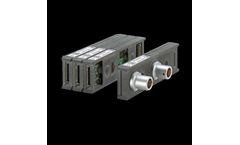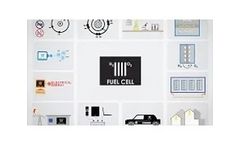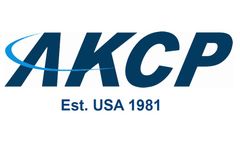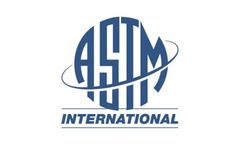Refine by
Fuel Cell System Articles & Analysis
53 articles found
Eastern Michigan University (EMU) is located in Ypsilanti, Michigan, approximately 35 miles west of Detroit and 8 miles east of Ann Arbor. It was founded in 1849 as a small teachers college and today has grown into a major public learning and research institution with over 21,000 students. EMU historically has been a leader in energy efficiency and sustainability. In 1987, the University ...
The new EIS system was successfully integrated into the newly developed test stand for full-stack fuel cells with an output of up to 200 kW by MS2 Engineering und Anlagenbau GmbH, which was put into operation at the Fraunhofer Institute for Solar Energy Systems in Freiburg. Electrochemical impedance spectroscopy can be used to ...
This article was originally published on 14th August 2019 and has been updated to reflect the latest industry research. Electrochemical fuel cells are a transformative innovation in sustainable energy, offering the potential to replace combustion engines with cleaner, more efficient systems. Among the various fuels explored for ...
Hydrogen (H2) production is pivotal in the global shift towards a net-zero carbon economy. Its elemental abundance and zero-emission combustion position it as an ideal renewable energy source. However, the journey to harness hydrogen’s full potential is fraught with challenges, particularly in storage and transportation. Researching viable hydrogen carriers is critical, as conventional ...
PHILOS, a leading membrane technology manufacturing company, and Blue FC, a fuel cell system company, have announced a ground-breaking R&D and business cooperation that is set to revolutionize the fuel cell industry. ...
The integration of NH3 cracker (installed with catalyst), gas purifier, fuel cell, and energy management system formed a successful powertrain that could thrust a golf cart into motion. ...
However, our best hope against such catastrophe is that Ocean might be able continue buffering and clean up by mopping up the damage done to climate system. We cannt afford to give up for our generations to come. We should minimize confusing the Society with sophisticated terms about uncertainty ranges and probability levels. ...
Demand for telecommunications and computing power has given an oppourtunity for fuel cells. Fuel cells, alone or in combination with other technologies, can give exceptional reliability. ...
ByAKCP
Executive Summary The accelerating drive for universal mobile access, for people and increasingly for connected vehicles and objects, means that expansion of the cellular network is outpacing that of the electricity grid. According to the GSMA, the number of off-grid base stations is expected to rise from 320,000 in 2014 to 390,000 in 2020, while base stations with unreliable power will rise ...
Power outages not only cause lost revenue due to missed transactions, but banks draw fines and penalties for non-compliance with banking regulations for mandatory uptime and service; indeed extensive outages may even cause derating for non-compliance. The Fuel Cell Solution: GenCell G5 long-duration UPS ensures business continuity The existing backup power ...
Malaya Business Insight Reporter Anton de los Reyes met with GenCell CEO Rami Reshef to learn about the launch of GenCell’s fuel cells in the Philippines. The article highlights the GenCell Remote IoT Manager, the software and app that allow remote control and monitoring of the equipment. Using the software allows users to track and optimize fuel cell performance in real-time and to receive ...
CalBio’s dairy digester technology with Bloom Energy’s solid oxide fuel cell technology delivers an end-to-end solution for the capture of methane and generation of renewable electricity. ...
Electrochemical fuel cells are envisaged as a potential successor technology to combustion engines in the automotive sector. ...
Indeed, in May 2019, the City of Seattle, Washington announced that the trash truck fleet servicing Seattle will now include some 91 Waste Management vehicles powered by RNG generated by decaying trash from U.S. landfills. Hydrogen Fuel Cell Vehicles Importantly for the environment, hydrogen fuel cell electric vehicles (FCEVs) ...
The ene.field project is the largest European demonstration of the latest smart energy solution for private homes, Fuel Cell micro-Cogeneration. The EU co-funded project ene.field has deployed more than 1,000 residential fuel cell Combined Heat and Power (micro-CHP) installations, across 11 key European countries. It represents a step change in the volume of fuel cell micro-CHP (micro FC-CHP) ...
PACE stands for Pathway to a Competitive European Fuel Cell micro-Cogeneration Market. It is a €90 million public-private project co-funded by the Fuel Cells and Hydrogen 2 Joint Undertaking (FCH JU). PACE is a major EU project unlocking the large scale European deployment of the latest smart energy solution for private ...
This study aims at improving the performance of the cultivating system of rice for animal feed with circulated irrigation of treated municipal wastewater by applying a larger amount of wastewater, as well as adding a microbial fuel cell (MFC) to the system. ...
Similarly, Verizon is spending $100 million on solar and fuel cell technology to power its facilities and cell-network infrastructure. ...
In this study, the multi–objective optimisation of a solid oxide fuel cell (SOFC) system by defining the objective functions to maximise the power output, energy efficiency and exergy efficiency, and minimise the cost under various constraints is conducted. ...
To evaluate the possibility to use molten carbonate fuel cell technology for high temperature electrolysis, the factors affecting the electrode reactions have been examined by surveying the published literature. The literature results showed that H2, CO2 and CO evolved as cathode off–gases and O2 as anode gas. At low polarisation, the discharge of oxide ions to O2 was the only anodic process; ...
















